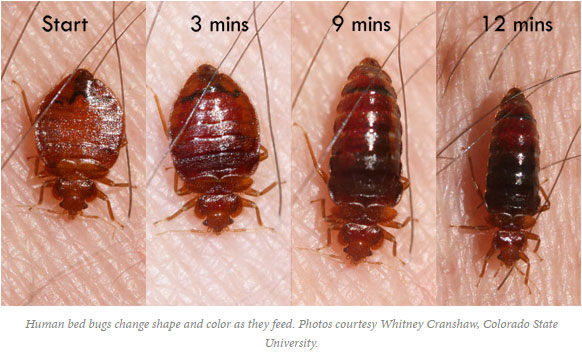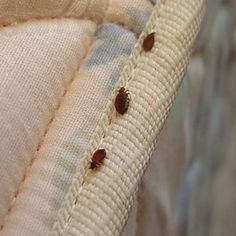Comprehensive A1 Bed Bug Extermination in Houston Area
Comprehensive A1 Bed Bug Extermination in Houston Area
Blog Article
Comprehending the Lifecycle of Parasites for Targeted Control Strategies
Understanding the lifecycle of bugs is a fundamental element of reliable parasite monitoring strategies. Via a deeper understanding of just how insects advance and flourish, tailored control approaches can be made to resolve details factors in their lifecycle, inevitably leading to more successful insect management outcomes.
Value of Comprehending Bug Lifecycle
Understanding the lifecycle of insects is necessary for creating efficient and targeted control approaches in parasite administration. By comprehending the various phases a bug experiences from egg to adult, pest control professionals can identify susceptible points in the lifecycle where intervention can be most effective. For instance, recognizing when larvae are most active can aid determine the optimal timing for applying larvicides. In addition, understanding the life expectancy of an insect types can aid in forecasting population development patterns and prospective infestation risks.
Moreover, acknowledging the specific environmental problems essential for each and every stage of the parasite's lifecycle can direct choices on habitat alteration or exemption techniques to interfere with the lifecycle and lower bug populations. This expertise allows pest administration professionals to execute positive measures instead of depending solely on reactive therapies, bring about more long-lasting and lasting pest control options. Eventually, a comprehensive understanding of insect lifecycles equips insect control experts to customize their methods properly, minimizing environmental effects and making the most of control outcomes.
Secret Phases in Bug Growth
To properly carry out targeted control approaches in bug administration, a crucial facet exists in thoroughly determining and comprehending the essential stages in pest advancement. Insect growth usually consists of several vital phases that are important for their lifecycle and monitoring.

Susceptabilities in Insect Lifecycle
Throughout the numerous phases of an insect's lifecycle, distinctive susceptabilities emerge that can be strategically targeted for efficient control actions (A1 Bed bug Exterminator houston). One crucial susceptability exists in the egg phase, where bugs are commonly a lot more susceptible to particular insecticides or organic control agents due to their soft outer covering, making them simpler targets for intervention. Recognizing these susceptabilities in the parasite lifecycle is necessary for establishing effective and accurate control methods that properly take care of bug populaces while lessening environmental impact.
Implementing Targeted Control Actions

Applying targeted control measures typically includes a multi-faceted technique. This may include environment modification to make the setting less hospitable to bugs, such as eliminating standing water for insect control or sealing entry factors for rodents. Additionally, organic control methods can be used, where natural killers or virus are presented to keep insect populations in check.
Integrated Bug Monitoring (IPM) techniques that combine various control actions in a worked with and sustainable way are frequently the most efficient in achieving lasting insect monitoring objectives. By carrying out targeted control procedures based on a complete understanding of parasite lifecycles, pest populaces can be successfully controlled while lessening dangers to human wellness and the atmosphere.
Boosted Pest Administration Practices

In addition, the unification of biological control agents, such as natural killers or virus of insects, can assist minimize reliance on chemical pesticides and promote a much more balanced ecological community. Applying physical obstacles and catches can additionally become part of boosted pest monitoring practices, supplying non-toxic and targeted solutions for pest control. Additionally, making use of scents and various other semiochemicals can interfere with pest mating patterns and communication, bring about lowered insect populaces over time.
Final Thought
By identifying vital phases in pest development and susceptabilities in their lifecycle, targeted control steps can be applied to decrease parasite populaces. Boosted pest management techniques can assist lower the dependence on broad-spectrum pesticides and promote more environmentally pleasant and lasting parasite control approaches.
Comprehending the lifecycle of bugs is crucial for creating effective and targeted control techniques in bug monitoring. By understanding the numerous stages a bug goes with from egg to grownup, parasite control specialists can determine vulnerable points in the lifecycle where intervention can be most successful. Ultimately, an extensive understanding of bug lifecycles equips pest control specialists to tailor their techniques effectively, maximizing and decreasing ecological impacts control end results.
By carrying out A1 Bed bug Exterminator houston targeted control procedures based on a complete understanding of insect lifecycles, pest populaces can be properly regulated while reducing risks to human health and the atmosphere.
By recognizing key stages in pest development and vulnerabilities in their lifecycle, targeted control actions can be applied to decrease bug populaces.
Report this page